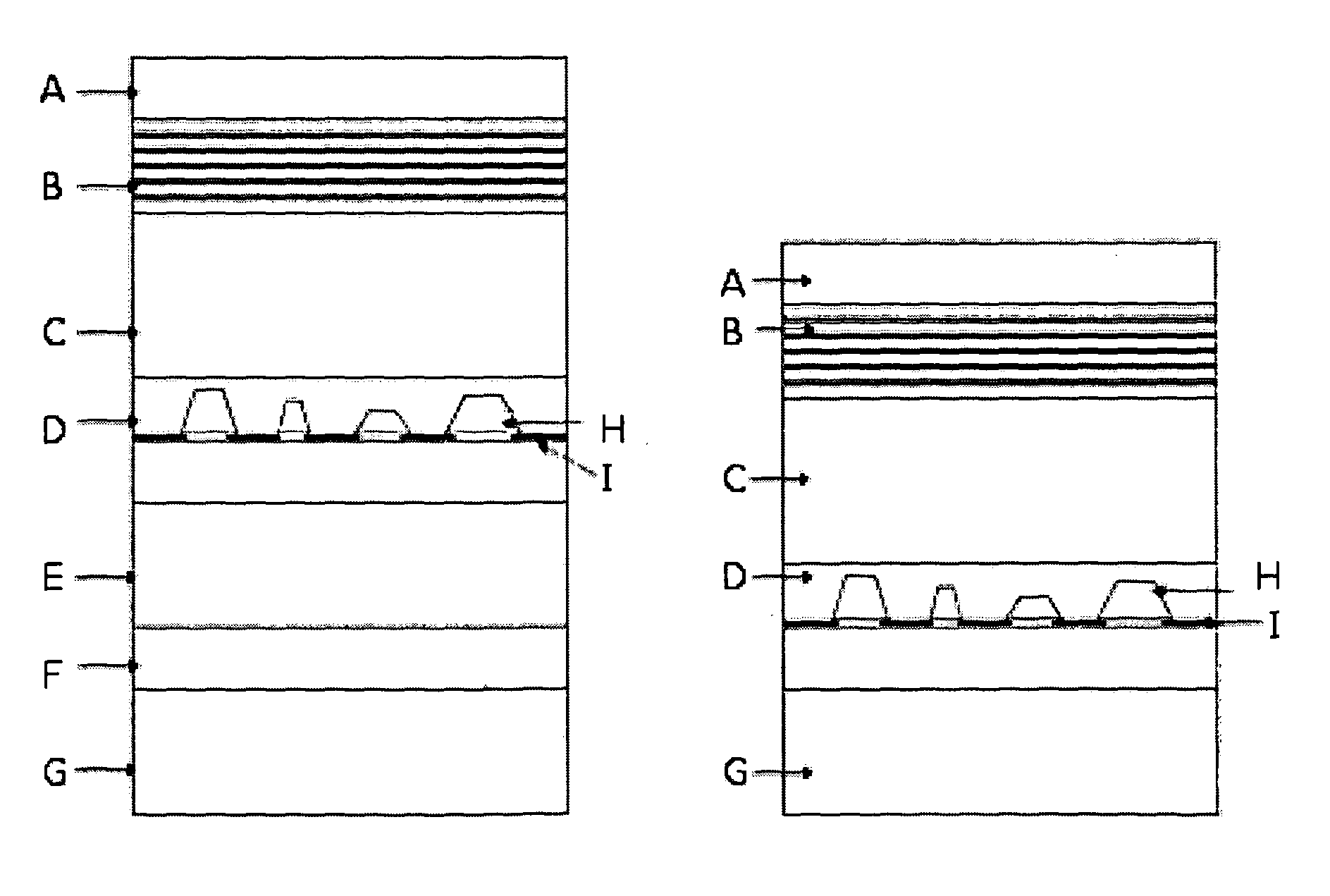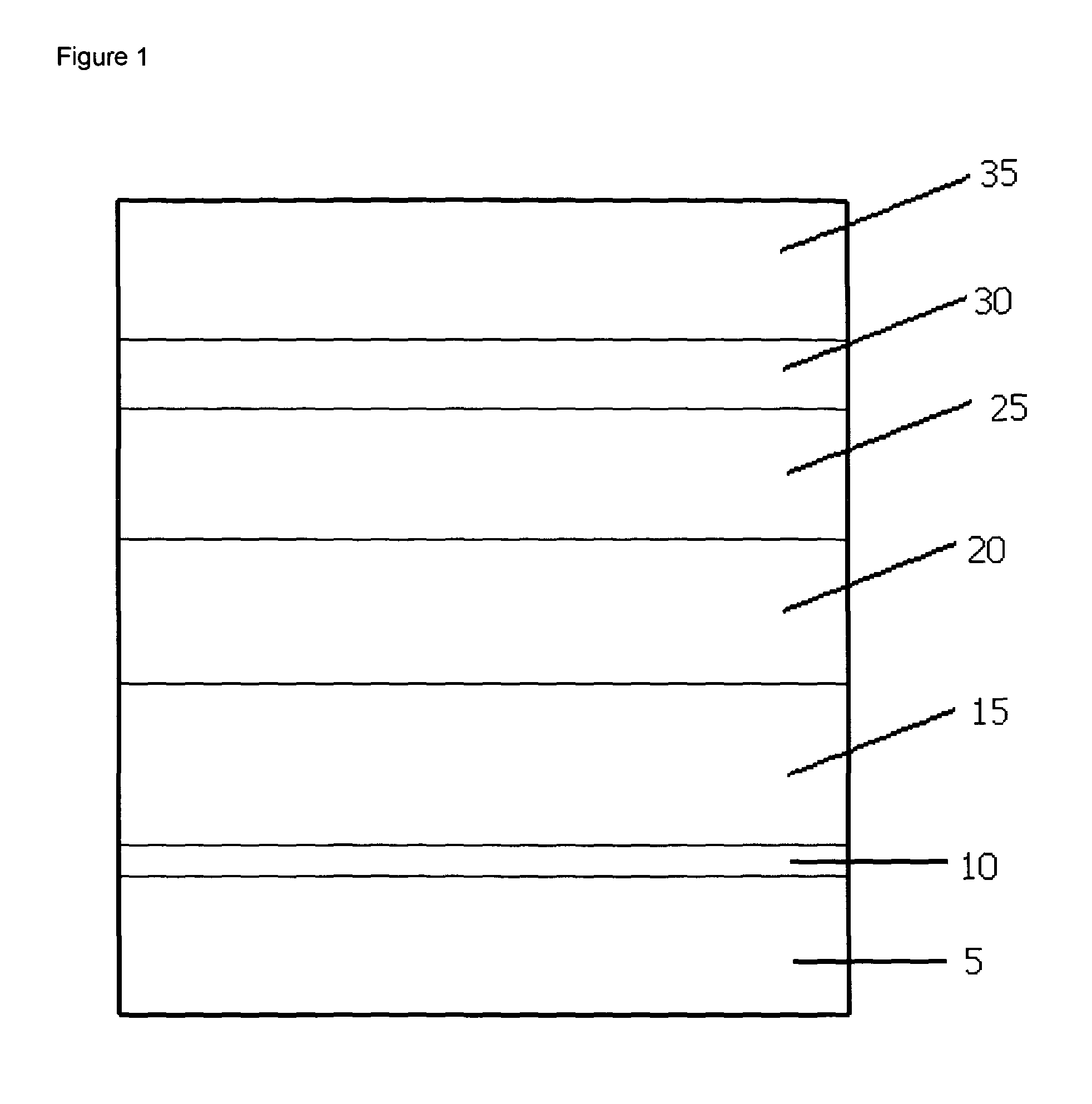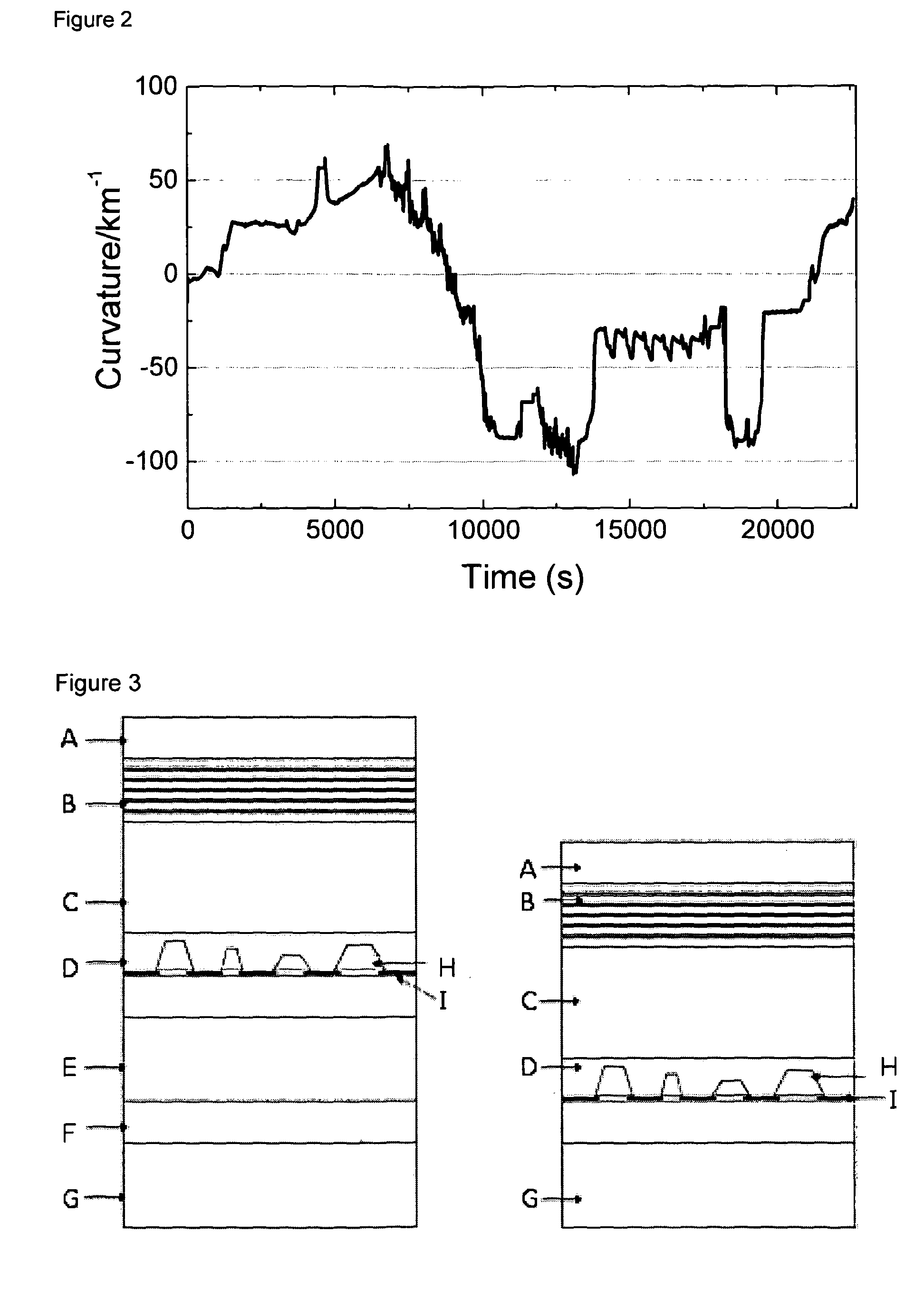Semiconductor wafer comprising gallium nitride layer having one or more silicon nitride interlayer therein
- Summary
- Abstract
- Description
- Claims
- Application Information
AI Technical Summary
Benefits of technology
Problems solved by technology
Method used
Image
Examples
example 1
[0066]In this embodiment GaN structures are grown on either 2-inch or 6-inch Si (111) substrates 5 by metalorganic vapour phase epitaxy (MOVPE) in a 6×2″ Aixtron CCS reactor using a 6×2″ or 1×6″ susceptor. Trimethylgallium (TMG), trimethylaluminium (TMA) and trimethylindium (TMI) were used as group-III precursors, while ammonia was used as the nitrogen source. Silane (SiH4) and cyclopentadienyl magnesium (Cp2Mg) are used as the sources of n-type and p type dopants, respectively.
[0067]A flat, crack-free and uniform GaN-based LED structure was grown on 6-inch Si (111) substrate 5 by metal-organic vapour phase epitaxy (MOVPE). The as-supplied Si (111) substrates 5 were first annealed in the reactor to remove the native oxide layer.
[0068]This was followed by the growth of an AlN nucleation layer 10 which prevents Ga from reacting with the Si substrate. An AlGaN buffer layer 15 was then grown to control the stress. The AlN nucleation layer 10 and graded AlGaN buffer layer 15 were employe...
example 2
[0076]A commercially available Epicurve®TT sensor (Laytec GmbH) was used to give emissivity-corrected real-time temperature and wafer curvature measurement and an Argus (Aixtron) in-situ temperature profiler was installed on top of the reactor to provide a complete temperature map of the wafer. FIG. 2 shows a trace of the curvature of the wafer during the manufacturing process for a wafer.
[0077]As can be seen in FIG. 2, the curvature of the wafers varies throughout the process.
[0078]Between 1000s and 3000s the substrate was annealed and plateaued at 25 / km. Then a 200 nm AlN nucleation layer was formed which increased the concave form of the wafer. At 7500s the AlGaN buffer layer was formed, and then a GaN layer containing a single interlayer to a total thickness of 1.3 μm. At 12500 a Si-doped GaN layer was formed. Between 14000s and 18000s InGaN—GaN multi quantum wells (MQW) were formed before the wafer composite was allowed to cool. During cooling the curvature dropped from −150 / km...
example 3
[0087]A graded AlGaN buffer layer was grown on an AlN / Si template, followed by 300 nm thick GaN layer at 1020° C. The temperature was then decreased to 950° C. for the deposition of the SiNx interlayer and regrowth started at 970° C. to form faceted islands and then changed to 1050° C. for slow growth of the GaN layer to coalesce the film. After the film is fully coalesced growth conditions were set for faster GaN growth. The thickness of GaN required to fully coalesce the film after the deposition of SiNx depends on the deposition time of SiNx IL, as well as the growth conditions of the GaN regrowth on top. The TD density of approximately 6×108 cm−2 was obtained together with flat crack-free wafers. Preferred TD densities are less than 5×109 cm−2, more preferably less than 1×109 cm−2, more preferably less than 8×108 cm−2.
[0088]After the growth of the AlGaN buffer layer, nominally undoped GaN of 100-400 nm thick is grown, followed by the deposition of the SiNx interlayer and further...
PUM
 Login to View More
Login to View More Abstract
Description
Claims
Application Information
 Login to View More
Login to View More - R&D
- Intellectual Property
- Life Sciences
- Materials
- Tech Scout
- Unparalleled Data Quality
- Higher Quality Content
- 60% Fewer Hallucinations
Browse by: Latest US Patents, China's latest patents, Technical Efficacy Thesaurus, Application Domain, Technology Topic, Popular Technical Reports.
© 2025 PatSnap. All rights reserved.Legal|Privacy policy|Modern Slavery Act Transparency Statement|Sitemap|About US| Contact US: help@patsnap.com



